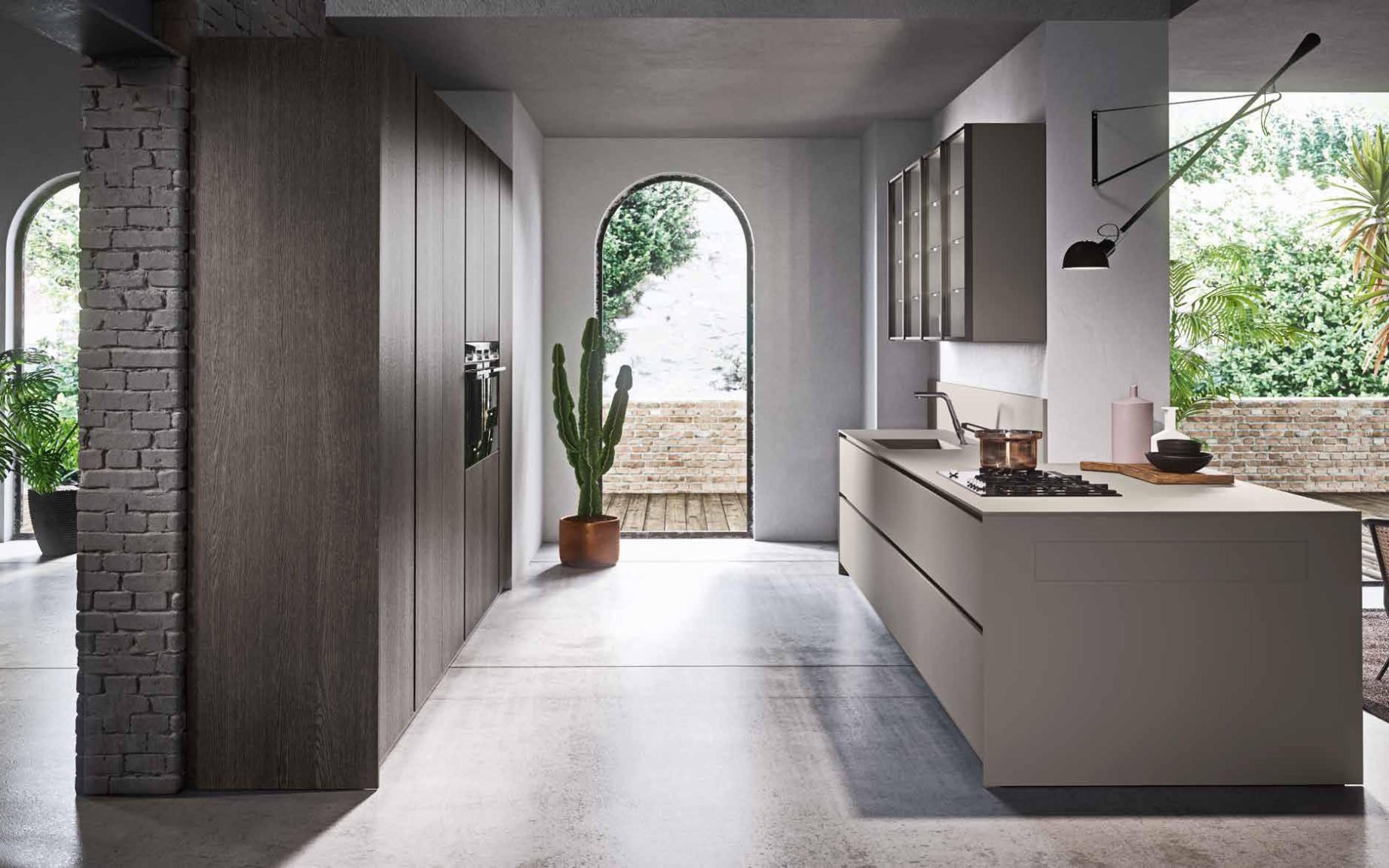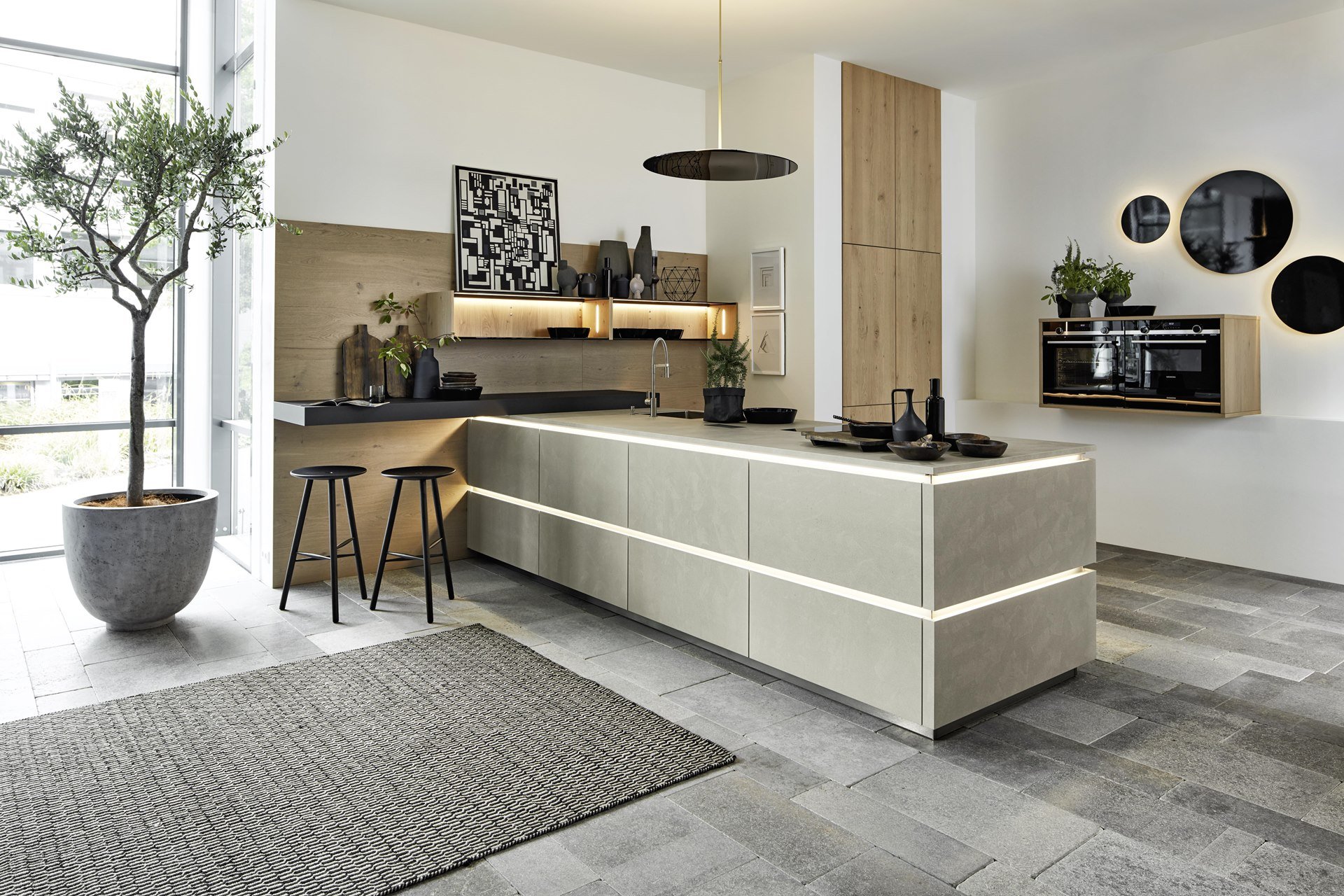Just a few decades ago, the kitchen existed for one reason alone – to cook. But my how times have changed this purely functional space into one that is absolutely the most important part of a family home.
For upper-class families, the kitchen was the domain of household help. For others, it was the domain of the housewife. Over time, societal changes have seen our lifestyles evolve dramatically, and the home has accordingly been reconceptualised.
At the centre of those changes has been the transformation of the kitchen. With the shift away from the antiquated image of the kitchen as a purely utilitarian room, this space has evolved over the decades to become a space where the family gathers. Driven in part by the growing size of the home and the evolution of appliances, today, the kitchen is an increasingly streamlined space designed for ease of movement and relaxation; an area where we enjoy breakfast, where the kids gather to do their homework, and where we host guests.
The Evolution of the Kitchen
In translating these changes to design, the traditional boundaries between kitchen and living have dissolved, transforming the kitchen into a new kind of shared environment. From the fifties onwards, the kitchen became more of a social space closely linked to the living area, and thus became increasingly decorative. By the sixties, various types of appliances grew, and L and U shape kitchens became popular, as did laminate cabinets and linoleum floors. The seventies saw the introduction of the island and brightly coloured wallpaper. By the eighties, the kitchen’s growing size saw larger tables introduced, and the kitchen became increasingly open-plan. And by the nineties, the kitchen, along with modern steel appliances, became ever slicker, and it was cemented as the beating heart of the home.
Above: Kitchens from SieMatic and Pedini
The Living Kitchen
Today the kitchen is a place for multitasking and simultaneously acts as an entertainment hub. With a strong emphasis on minimalism, kitchen design is now focused on clean lines and fluid, continuous spaces, with appliances becoming more and more hidden, and cupboard doors losing any prominent or visible handles – a major trend this year. Meanwhile, display cabinets and shelves have grown in popularity, showcasing art objects and personal artefacts, and there is an even greater emphasis on the kitchen island, a space around which to gather and where hosts can display their kitchen skills while catering to guests. These design shifts point to a move beyond the open plan and more toward a ‘living kitchen’.
These trends have been perfectly captured by Italian brand, Pedini and German premium brand SieMatic. Pedini, in its most recent collections, Quadra Arkéa and Quadra 70, celebrates elegance and sophistication with an injection of retro charm, characterised by immaculate design. Its striking tall black units, which maximise storage space, are made of sustainable woods, complete with the brand’s trademark lacquer finishes. A real eye-catcher, they bring the living element into the kitchen with zero aesthetic interruptions. Among the collection’s other standout features are its smoked glass cabinets and shelves for display, ideal for artistic and decorative objects.
With an emphasis on modern industrialism, SieMatic’s award-winning handle-free SLX collection similarly celebrates timeless design. Honing in on the latest entertainment aspect of the kitchen, the brand is big on the island. The centrepiece of the kitchen, ceramic countertops, which have replaced marble, promise longevity thanks to being both scratch and stain free – ideal when cooking with lots of colourful spices. Unique finishes are guaranteed thanks to digital printing of the ceramic countertops, and another prominent feature of the island is integrated lighting – for a touch of theatrics. Complete with transparent doors and side panels, this gives the appearance of a countertop floating in space.
These trends have been set in the colours and tones of the season, namely bold blacks and metallic finishes, for a timeless look, with injections of warm tones including Pantone’s colour of the year, Ultimate Grey, which is contrasted against dark veneers and splashes of patterns, whether on the walls, cabinets or floors. Villeroy & Boch does this beautifully with their Mettlacher Platte design, which can be found across its kitchen furniture for a unique finish. With their modern, geometric design, the tiles are a lattice with a one mm deep relief, milled into the kitchen fronts before the surface is painted, adding an exciting textural design element to the kitchen as they reflect light and shadow. Similarly, patterns are big across wooden flooring in the kitchen, with Siematic pointing to the growing popularity of the Herringbone pattern.
The emphasis on a minimal design aesthetic has not, however, come at the cost of functionality. With an accent on practicality, organisation and maximising space, in today’s kitchen, there is, as the saying goes, a place for everything and everything in its place. Taking functionality up a notch in the kitchen is Switzerland based brand Franke with its workstation. Described as the Swiss army knife of the kitchen, the design features every essential accessory one could need. The sleek and well-thought-out arrangement eliminates clutter in its entirety, with everything at hand for easy use. Forget those clunky chopping boards and colanders! Purpose designed drawers and cabinets will be a growing and lasting trend that can be seen across all major brands.
Above: Kitchens by Villeroy & Boch, and Franke
Technology Driven Equipment
Finally, when it comes to the kitchen sink, premium kitchen and bathroom brand Hansgrohe has reimagined the faucet in its Focus M42 range. With its ComfortZone height technology, which offers its design in high, swivelling or pull-out forms, users can enjoy increased space between the spout and sink. Several models also come with a pull-out hand spray or pull-out faucet, allowing the hose-like design to be comfortably extended for improved ease of use. Similarly, leading kitchen and bathroom brand GROHE has bought its innovative touch to the kitchen faucet. Combining pull-out technology with a spray function, its Zedra range is ideal for blitzing your veggies or dirty plates clean while helping you to reduce your water consumption by up to 70 percent. Complete with a magnetic docking system, the hose is easily replaced after use.
Quooker has absolutely revolutionised the hot and cold faucet by inventing the ‘Tap That Does It All’. One single Quooker faucet gives you 100 degrees of boiling water that is coffee and tea ready, chilled or sparkling water, and clean filtered fresh water. This one tap does away with the need for multiple appliances in your kitchen. Win win!
Above: Hansgrohe’s M42 range; Grohe’s Zedra; Quooker, the tap that does it all
Arguably, one of the most exciting faucet technology developed recently is Kohler’s Konnect voice-activated faucets announced at CES 2021. Just say ‘wash hands’ and hey presto! You have flowing water. Its ceiling-mounted version, with a height-adjustable hose and spray head, takes the concept of maximising your counter space to new heights. Featuring a svelte spray head and allowing for a rotational reach of 180 degrees, it can be controlled by a button on the faucet or wirelessly from a water-resistant remote and is said to be coming to market in 2021. In the meantime, the brand’s Moderne Brushed Brass range, available now, will inject the season’s very trending metallic finishes into your home.








